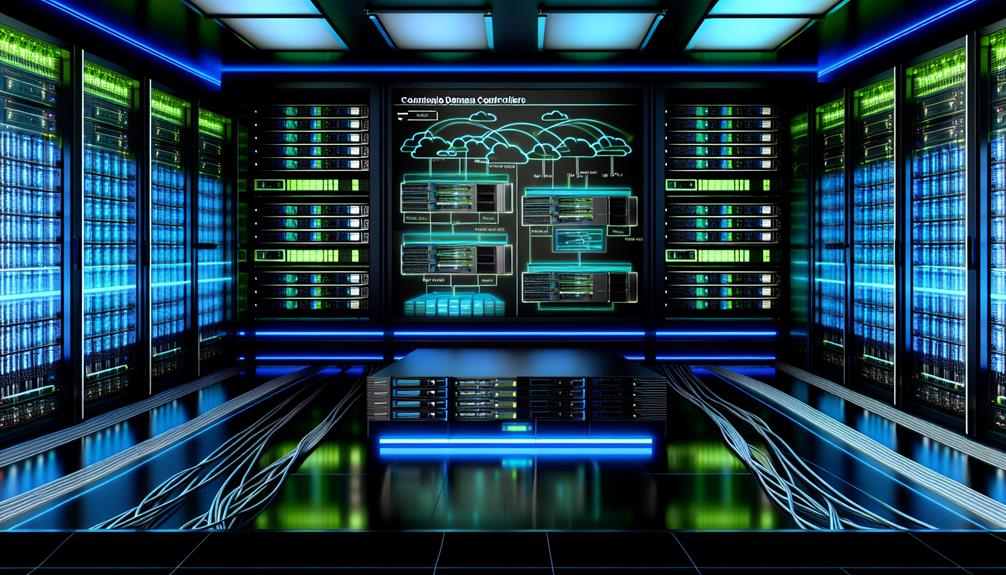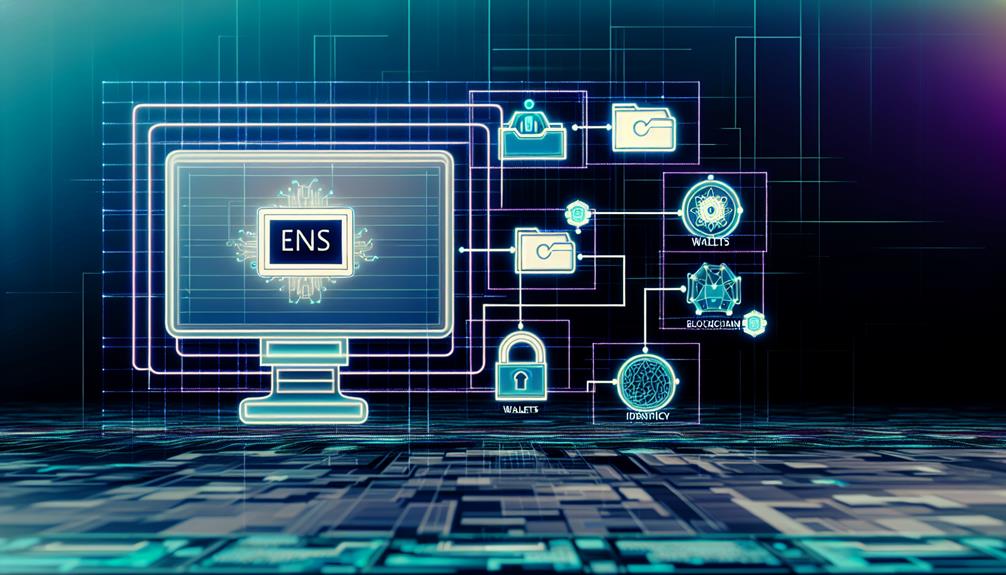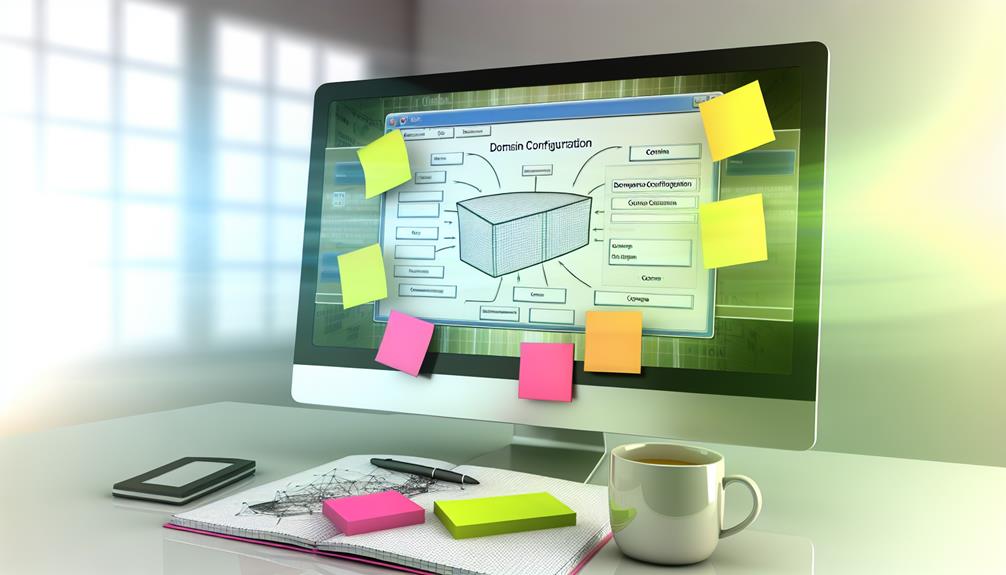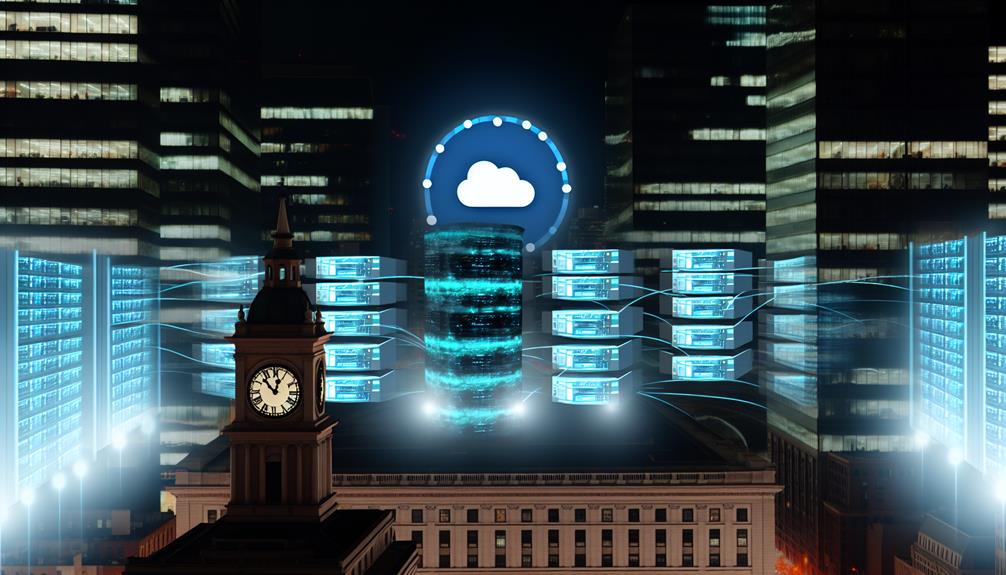You might think mastering DMZ Domain Controllers is only for large enterprises, but even smaller organizations can benefit greatly from understanding these systems. Recognizing their critical role in protecting your internal networks while handling external threats is essential. In this discussion, you'll discover seven key techniques that can elevate your security posture and streamline management. From implementing Read-Only Domain Controllers to exploring future trends, the right strategies can make all the difference in safeguarding your infrastructure. So, how do you start optimizing your DMZ environment effectively?
the DMZ Domain and Domain Controllers
A DMZ, or Demilitarized Zone, acts as a buffer between your internal network and external threats, facilitating secure communication for critical applications.
Domain controllers play a pivotal role in maintaining network security by managing authentication processes within this architecture.
Understanding the structure and functionality of a DMZ domain is essential for effectively safeguarding your organization's Active Directory environment.
What is a DMZ?
Separating internal networks from external threats is essential in modern cybersecurity, and this is where a DMZ, or Demilitarized Zone, comes into play. A DMZ is a network segment that acts as a buffer between your internal network and the internet, allowing controlled access to DMZ servers. These servers can host publicly accessible applications while safeguarding your internal infrastructure from potential attacks.
The implementation of domain controllers in the DMZ is critical for managing authentication for users and resources within this segment. However, if these controllers are compromised, they could expose your internal network to significant risks. To mitigate this, it's advisable to deploy a separate Active Directory forest specifically for DMZ domain controllers.
Utilizing Read-Only Domain Controllers (RODCs) in the DMZ enhances security by enabling secure authentication without allowing direct modifications that could jeopardize your internal network.
In addition, proper configuration of firewall rules and access controls is essential to restrict unauthorized access to the DMZ and protect your internal resources effectively. By understanding the role of a DMZ, you can better fortify your organization's cybersecurity posture.
Role of Domain Controllers in Network Security
Domain controllers (DCs) play a fundamental role in network security, particularly within the DMZ environment where they manage authentication and authorization for both internal and external users. Protecting your Active Directory is essential, as DCs are the gatekeepers of identity and access control.
In a DMZ setup, hosting a DC can heighten risks if compromised. Consequently, implementing strict access controls and robust security measures is imperative.
Utilizing Read-Only Domain Controllers (RODCs) in the DMZ allows for secure authentication without permitting direct changes to Active Directory, thus minimizing vulnerabilities. Establishing a one-way trust relationship between the DMZ and your internal domain enhances security by facilitating authentication while shielding the internal network from potential threats posed by DMZ access.
Moreover, regular assessments of your security posture and replication configurations are important. These evaluations guarantee that DCs in the DMZ don't introduce exploitable weaknesses.
Effective password management also plays a significant role in securing DCs, as strong, regularly updated passwords can greatly reduce the risk of unauthorized access. Keeping these considerations in mind will help you maintain a strong security framework around your domain controllers.
Overview of DMZ Domain Architecture
Designing a DMZ domain architecture involves creating a distinct Active Directory forest that isolates your DMZ resources from the internal network. This separation is vital for mitigating the risks associated with Active Directory compromise.
Your first question might be about how these resources are joined to the domain. Typically, domain controllers in the DMZ are configured as Read-Only Domain Controllers (RODCs), which enhance security by allowing secure authentication while limiting the potential impact of breaches.
Implementing a one-way trust relationship between the DMZ domain and the internal production forest guarantees controlled access without exposing internal assets to DMZ vulnerabilities. To achieve this, you must carefully plan port configurations, allowing only necessary communication between DMZ servers and internal domain controllers.
Regular reviews and updates of your DMZ domain architecture are essential. As security threats evolve, you need to adapt your authentication strategy to maintain a robust defense.
Best Practices for DMZ Domain Controllers
When configuring DMZ domain controllers, you need to prioritize security measures that limit exposure to threats.
Implementing read-only domain controllers (RODCs) and establishing strict firewall rules are essential for protecting your internal network.
Regular security audits and updates will help you adapt to evolving threats and maintain the integrity of your authentication processes.
Key Considerations for DMZ Configuration
Setting up a DMZ for your network infrastructure requires careful planning and execution to safeguard your organization's assets. You need to take into account several key factors to guarantee effective DMZ configuration. Here are four essential points to think about:
- Firewall Configuration: Restrict inbound and outbound traffic by carefully configuring firewall rules. This should only allow the necessary ports for Active Directory functionality, minimizing exposure.
- Read-Only Domain Controllers (RODCs): Implement RODCs in the DMZ to reduce the risk of compromising your internal domain while still enabling required authentication services.
- Separate Active Directory Forest: Contemplate establishing a distinct Active Directory forest for the DMZ. This enhances security and reduces the risk of Active Directory compromise from any breached DMZ machine.
- Documentation: Maintain thorough documentation of your network architecture and access controls. This guarantees clarity, facilitates auditing, and aids in recovery during security incidents.
Regularly review and update your DMZ authentication strategies to adapt to evolving threats, maintaining a robust security posture.
These considerations are vital for protecting your organization's sensitive information and securing the integrity of your infrastructure.
DMZ Domain Controller Best Practice: Security Measures
When managing DMZ Domain Controllers, implementing robust firewalls and access controls is vital for maintaining security.
You should focus on the following key practices:
- Harden Read-Only Domain Controllers (RODCs) by limiting access to essential authentication traffic only.
- Block all inbound requests from the DMZ to the internal network to mitigate potential threats.
- Configure push replication from internal DCs to RODCs to keep authentication current while preserving security.
- Regularly review firewall rules to restrict access to only the necessary ports for Active Directory functionality.
Implementing Firewalls and Access Controls
Implementing robust firewalls and access controls is essential for securing DMZ domain controllers, as these measures create a fortified barrier between your internal network and potential threats.
Block all unnecessary inbound requests, restrict access to crucial ports for Active Directory, and regularly update firewall rules.
Additionally, employ role-based access controls and conduct routine security assessments to identify vulnerabilities, ensuring optimal safeguarding.
Regular Security Audits and Updates
Regular security audits and updates are fundamental for maintaining the integrity of DMZ domain controllers. By conducting these audits regularly, you'll identify vulnerabilities and guarantee compliance with established security policies and standards. This proactive approach helps in mitigating risks before they can be exploited.
Implementing a structured schedule for updates and patches is essential, as it protects your DMZ domain controllers from emerging security threats. Stay ahead of potential exploits by prioritizing timely updates.
Additionally, regularly reviewing access controls and permissions minimizes the risk of unauthorized access, which is imperative for safeguarding sensitive data.
Documenting changes and audit results not only enhances transparency but also provides a clear historical record for future security assessments. This documentation can be priceless during incident investigations or compliance audits.
Utilizing automated tools for monitoring and auditing can greatly streamline your security assessments in the DMZ environment. These tools enhance efficiency and effectiveness, allowing you to focus on critical issues rather than getting bogged down by manual processes.
Should DMZ Servers Be on the Domain?
When considering whether DMZ servers should be on the domain, you'll need to weigh the security risks against operational efficiency.
While joining them to the internal domain may simplify management, it also increases the risk of Active Directory compromise if the DMZ is breached.
An isolated environment, possibly with a separate forest or Read-Only Domain Controllers, can enhance security while still providing necessary functionality.
Analyzing the Pros and Cons
When considering whether DMZ servers should join the internal domain, you need to weigh the potential risks carefully.
While integration simplifies authentication, it greatly heightens the chances of compromising your Active Directory if the DMZ is breached.
Analyzing these trade-offs is essential to establish a secure and efficient strategy for your environment.
Potential Risks of Domain Inclusion
In the context of network security, the decision to include DMZ servers in the internal domain warrants careful scrutiny due to the heightened risks involved.
A breach of a DMZ machine could compromise Active Directory integrity.
Instead, consider implementing a separate AD forest or a one-way trust relationship.
Utilizing Read-Only Domain Controllers can enhance security while maintaining centralized authentication management, mitigating risks effectively.
Benefits of Isolated DMZ Environments
Isolated DMZ environments greatly enhance security by creating a buffer between external threats and the internal network. By keeping DMZ servers off the internal domain, you minimize the risk of an Active Directory (AD) compromise. If a breach occurs in the DMZ, it wouldn't directly affect the integrity of your corporate AD, thereby safeguarding your internal resources.
Utilizing a separate AD forest for DMZ servers improves security controls, although it does introduce management overhead. You'll need to carefully consider your authentication strategies to guarantee they align with your security posture.
Implementing Read-Only Domain Controllers (RODCs) in the DMZ provides a secure method for authentication while limiting exposure. RODCs don't host writable copies of the AD database, which reduces the attack surface.
Furthermore, establishing a one-way trust configuration between the DMZ and your internal domain allows for efficient authentication processes without exposing your internal network to increased risks. This layered approach considerably strengthens your overall security framework, guaranteeing that even if a DMZ server is compromised, your internal systems remain protected.
Implementing a DMZ Domain: Steps and Considerations
When implementing a DMZ domain, you need to approach the process methodically to guarantee robust security and functionality.
Start by focusing on these key areas:
- Evaluating Your Network Needs
- Designing the DMZ Architecture
- Choosing Appropriate Hardware and Software
- Conducting a Risk Assessment
Assessing Your Network Needs
How can you effectively assess your network needs before implementing a DMZ domain? First, identify your specific security requirements and potential risks.
Understand that a breach of a DMZ machine could lead to an Active Directory compromise, so evaluate the risk levels associated with your current infrastructure.
Next, determine the necessary technical infrastructure. This includes configuring firewalls and identifying required ports for secure communication between the DMZ and your internal network.
Ensuring these elements are correctly set up is essential for secure operations.
Consider whether deploying a separate Active Directory forest for the DMZ makes sense for your organization. While this can enhance security, be aware of the increased management overhead and costs due to account duplication.
Evaluate the advantages of using one-way trusts or Read-Only Domain Controllers (RODCs) in the DMZ. These options allow centralized management while minimizing the risk of exposing your internal network.
Designing the DMZ Architecture
After evaluating your network needs, you can begin designing the DMZ architecture, which involves strategically planning the layout and components to enhance security while maintaining functionality.
Start by establishing a network segment dedicated to external-facing servers, guaranteeing these are protected by a robust firewall from both the public internet and your internal network.
Consider implementing a separate Active Directory forest for the DMZ. This approach mitigates risks associated with Active Directory compromise if the DMZ is breached.
Establish a one-way trust relationship between the DMZ and your internal domain to facilitate secure authentication without exposing your internal infrastructure to potential threats from the DMZ.
Utilizing Read-Only Domain Controllers (RODCs) in your DMZ enhances security by allowing centralized authentication while minimizing risk, as RODCs don't store writable copies of the Active Directory database.
Choosing Appropriate Hardware and Software
Choosing the right hardware and software for your DMZ domain controllers is critical to guaranteeing both security and performance. Start by selecting hardware that provides adequate processing power and memory to handle anticipated authentication loads without compromising performance. This guarantees that your domain controllers can efficiently manage requests while remaining responsive.
Next, choose an operating system that supports Read-Only Domain Controller (RODC) functionality. This feature enhances security by limiting exposure to your internal network, which is essential when operating in a DMZ environment.
You must also configure network interfaces carefully, allowing your DMZ domain controllers to communicate securely with both the DMZ and internal networks. Define necessary firewall rules to control this traffic, guaranteeing that only authorized connections are permitted.
Consider implementing a dedicated Active Directory forest for the DMZ. This isolation helps manage authentication risks independently from your internal network.
Finally, prioritize regular updates and patching for your DMZ domain controllers' software. Keeping your systems up-to-date is crucial for protecting against vulnerabilities and maintaining compliance with security best practices.
Conducting a Risk Assessment
Before implementing a DMZ domain, conducting a thorough risk evaluation is essential to identify potential vulnerabilities and threats to both the DMZ and the internal network.
Start by evaluating the implications of joining DMZ machines to the internal domain. This action can greatly increase the risk of Active Directory compromise if a DMZ server is breached.
Next, consider the management overhead associated with maintaining a separate Active Directory forest for the DMZ. While this approach can enhance security, it requires additional administrative resources that may strain your team.
Evaluate your authentication strategies carefully. Options like Read-Only Domain Controllers (RODCs) or a one-way trust relationship can help you balance security and accessibility effectively.
Establishing Monitoring and Maintenance Protocols
Establishing robust monitoring and maintenance protocols is vital for the security and performance of your DMZ domain controllers.
Begin by implementing a thorough monitoring protocol that involves regularly reviewing firewall logs and authentication attempts. This helps you detect any unusual activities within the DMZ environment before they escalate into significant issues.
Next, conduct routine maintenance checks on all DMZ servers. Confirm that security patches and updates are applied promptly, mitigating vulnerabilities that could be exploited.
Configure alert mechanisms for failed login attempts or unauthorized access attempts to enhance your security posture.
Additionally, regularly audit user accounts and permissions within the DMZ. This guarantees compliance with security policies and reduces the risk of unauthorized access.
It's imperative to keep your user permissions tight and relevant.
Future Trends in DMZ and Domain Controller Management
As you look ahead, the shift toward zero-trust architectures will reshape how you configure your DMZ and domain controllers, greatly reducing lateral movement risks.
Integrating cloud services into your DMZ strategy will become essential, allowing for enhanced security and flexibility in your operational environment.
Additionally, embracing automation and containerization will streamline management processes and minimize potential attack surfaces, ensuring a more resilient infrastructure.
Predictions for DMZ Domain Practices
While the landscape of cybersecurity continues to evolve, organizations must anticipate significant changes in DMZ domain practices to enhance security and mitigate risks.
One major shift is the deployment of separate Active Directory forests specifically for DMZ environments. This approach reduces the risk of compromise, as it isolates potentially vulnerable components.
Additionally, you'll likely see an increase in the adoption of Read-Only Domain Controllers (RODCs) within DMZs, allowing for secure authentication without exposing internal networks.
Implementing one-way trusts between DMZ and internal environments will also become common, limiting the potential for Active Directory compromise while still facilitating necessary authentication processes.
Moreover, integrating multi-factor authentication into your DMZ security strategy will be essential; this adds a critical layer of protection beyond traditional domain authentication.
Integration with Cloud Services
Integrating cloud services into DMZ environments is set to revolutionize how organizations manage their domain controllers, offering enhanced scalability and flexibility. By incorporating cloud-based identity and access management solutions, you can simplify authentication processes for DMZ servers. This reduces the complexity often associated with traditional on-premises setups, streamlining operations while maintaining robust security controls.
Adopting a hybrid cloud model enables you to leverage both on-premises infrastructure and cloud resources, providing redundancy and effective disaster recovery options for your DMZ configurations. However, it's essential to prioritize data encryption and secure communication protocols when connecting DMZ operations to cloud services. These measures mitigate risks related to data breaches and unauthorized access, guaranteeing that sensitive information remains protected.
Additionally, you'll need to conduct regular assessments of your cloud security posture and verify compliance with industry standards. This vigilance is critical to prevent any vulnerabilities from being introduced into your network architecture during integration.
The proactive management of security controls, combined with the flexibility of cloud services, positions your organization to effectively navigate the evolving landscape of DMZ and domain controller management.




